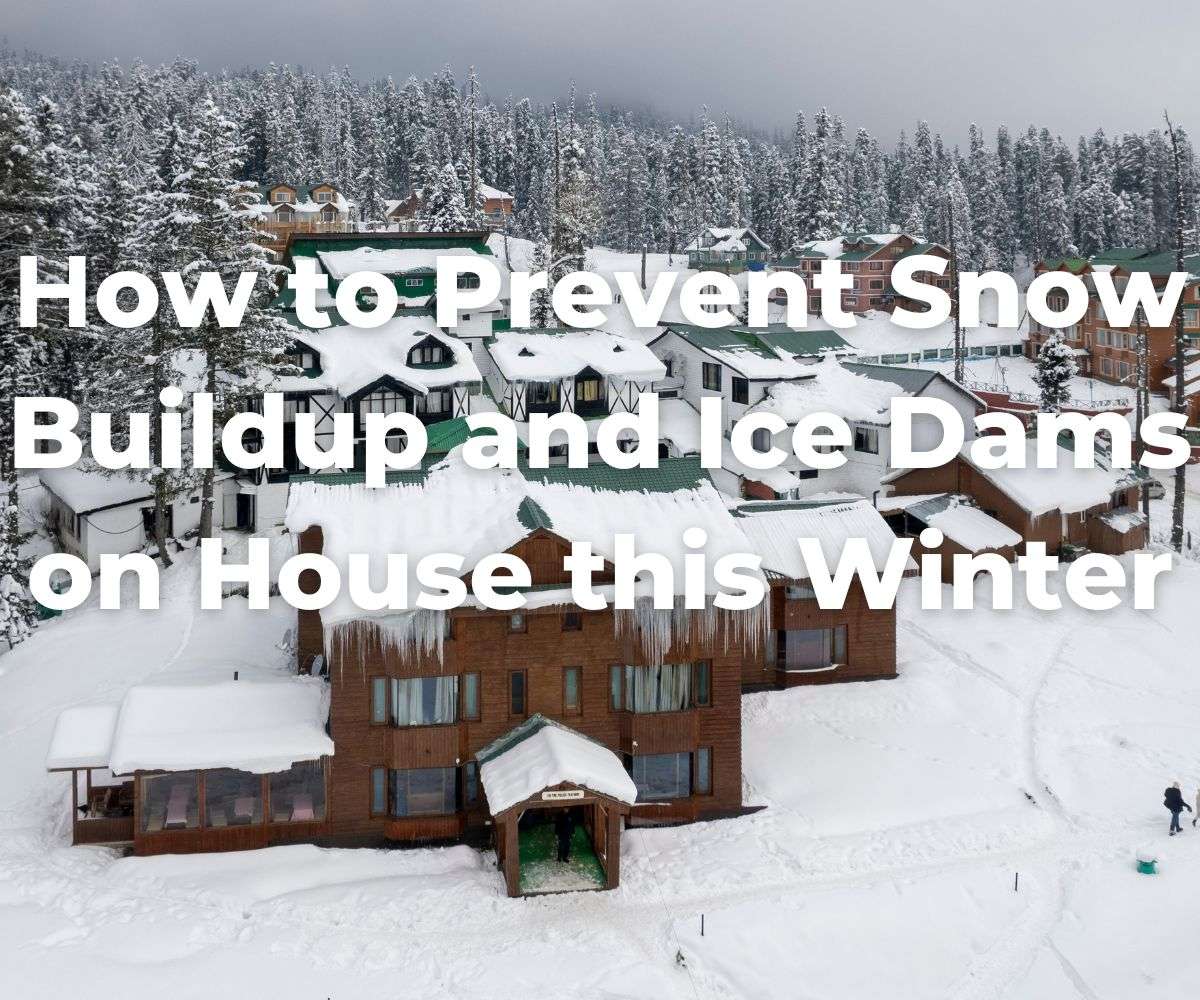how to prevent snow buildup and ice dams on house this winter
Description
How to Prevent Snow Buildup and Ice Dams This Winter
Winter snow may look beautiful, but it can lead to issues like snow buildup and ice dams, which can damage your roof, gutters, and home interior. With proper preparation, you can protect your home this season.
What Are Ice Dams and Why Are They a Problem?
Ice dams form when heat escaping from your home's roof melts the snow sitting above. The melted snow flows down to the colder edges of the roof and re-freezes, creating a buildup of ice.
Over time, this thick ice ridge prevents proper drainage leading to water pooling behind it. The trapped water can seep under your shingles, causing leaks, structural damage, and mold growth.
Snow buildup on its own, if heavy enough, also increases the load on your roof, which could lead to cracks or even a roof collapse in extreme cases. The combination of snow buildup and ice dams can spell trouble for any homeowner.
The good news? Preventative measures can help you avoid the worst winter has to throw at your home.
Steps to Prevent Snow Buildup and Ice Dams
Step 1: Ensure Your Attic is Properly Insulated
One of the easiest and most effective ways to prevent ice dams is by reducing heat loss in your home. Poor insulation allows warm air to escape into your attic, heating the roof’s surface and initiating the cycle that creates ice dams.
- Check Insulation Levels: Verify that your attic insulation meets the recommended levels for your area. Adding extra insulation if it’s lacking can make a big difference.
- Seal Air Leaks: Use caulking or spray foam around vents, electrical fixtures, and chimney gaps to block warm air from escaping into the attic.
By keeping your attic cold, you’ll prevent snow on your roof from melting too quickly.
Step 2: Ventilate Your Attic
Proper ventilation is essential to maintain the same temperature on your roof as the outside air. This minimizes the risk of snow melting prematurely and refreezing.
- Install Ridge and Gable Vents: These allow for better airflow, keeping your attic cool in the winter.
- Use Soffit Vents: Combined with ridge vents, soffit vents create a continuous airflow system to prevent heat buildup in your attic.
Good attic ventilation not only helps prevent ice dams but also improves overall air quality in your home and prevents moisture-related issues.
Step 3: Regularly Remove Snow from Your Roof
To prevent excessive buildup, remove snow from your roof before it has a chance to turn into a problem. However, this needs to be done safely to avoid damaging your roof or injuring yourself.
- Invest in a Roof Rake: These long-handled tools are specifically designed to pull snow off sloped roofs from the ground, minimizing risk.
- Hire Professionals: If manual removal feels unsafe, consider hiring a professional snow removal service like those in Draper. They’ll have the tools and experience needed to clean your roof effectively.
Avoid using tools like shovels or picks, which can damage shingles and cause unnecessary wear to your roof.
Step 4: Install Ice and Water Shields
An ice and water shield is a specialized underlayment installed beneath your shingles in high-risk areas, like roof eaves and valleys. This added layer of protection prevents water from leaking into your home if an ice dam does form.
While this is best installed during a new roof installation or replacement, it’s worth considering as a long-term investment in preventing winter-related roof issues.
Step 5: Clear Your Gutters Before Winter
Clogged gutters prevent water from draining properly, which can contribute to ice dam formation when temperatures dip below freezing.
- Remove Leaves and Debris: Clean out your gutters and downspouts before snow begins to fall.
- Install Gutter Guards: These can prevent additional debris from accumulating, keeping water flowing freely throughout the season.
Keep your drainage system in top shape so that melted snow doesn’t collect and refreeze at the roof’s edge.
Step 6: Use Heat Cables
For homes in extremely cold regions or with recurring ice dam issues, heat cables (also called heat tape) can be an effective solution. These electrical cables are installed along the roof's edge to provide consistent heat, preventing ice from forming.
- Opt for Automatic Heat Cables: These turn on only when the temperature drops below freezing, conserving energy.
- Follow Installation Guidelines: Ensure the heat cables are installed correctly to maximize their efficiency and avoid potential safety hazards.
Step 7: Schedule a Professional Roof Inspection
Finally, have your roof inspected by a professional before winter arrives. An expert can identify vulnerabilities such as damaged shingles, poor insulation, or inadequate ventilation that may become problematic during heavy snowfall.
A proactive inspection will not only prevent snow buildup and ice dams but also extend the life of your roof.
Why Prevention is Better Than Repair
The cost of repairing damages caused by snow buildup and ice dams is far higher than implementing these preventative measures. Water leaks can result in stained ceilings, warped floors, and even structural damage to your home. Add in the potential for mold growth, and the risks are simply not worth ignoring.
By taking preventative steps, you can save yourself time and money and the stress of dealing with winter damage.
Conclusion
Now that you know the steps to prevent snow buildup and ice dams, take action before winter arrives. Whether it’s installing proper insulation and ventilation or investing in heat cables, these preventative measures will save you from potential headaches down the road.






















